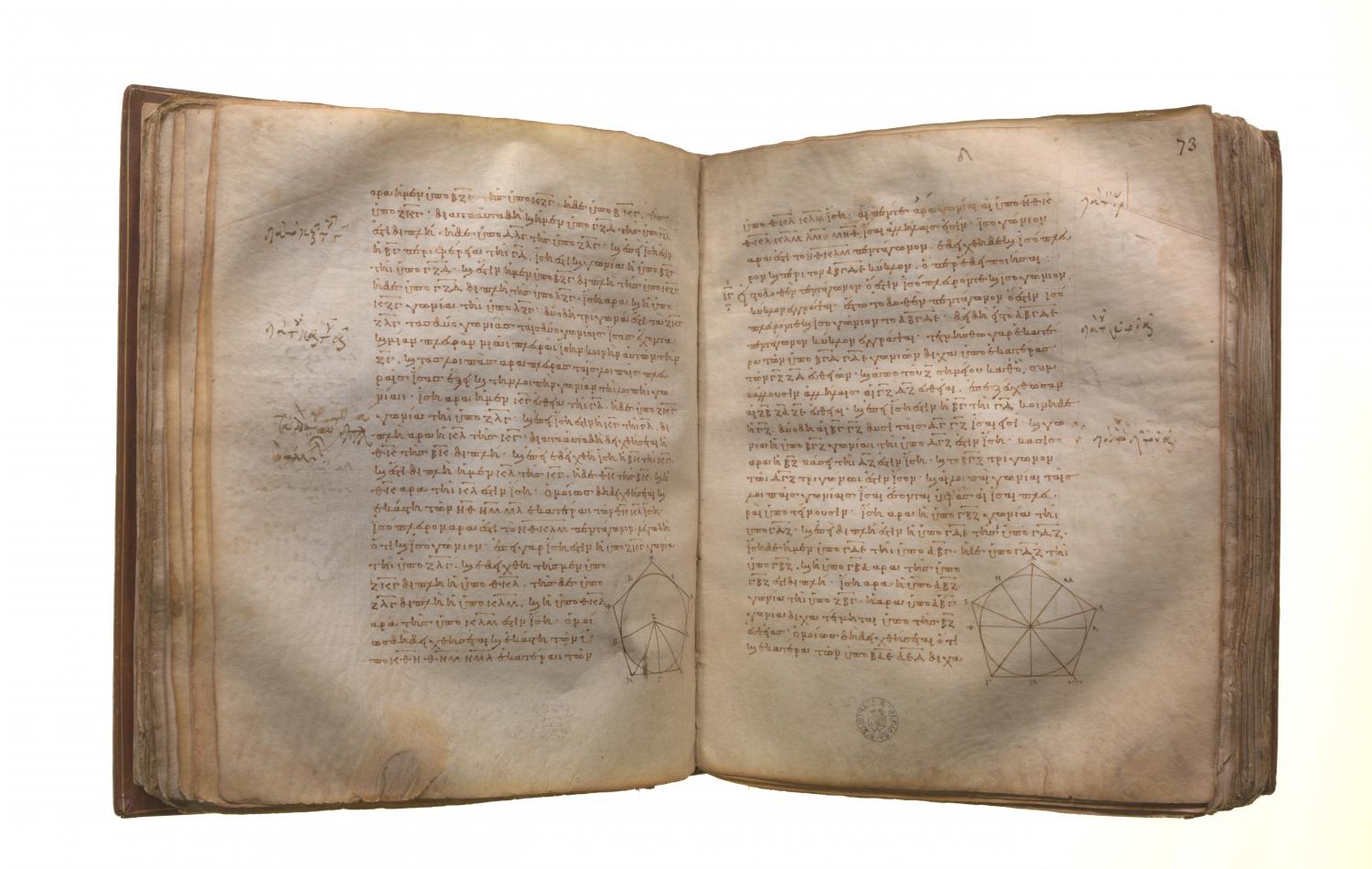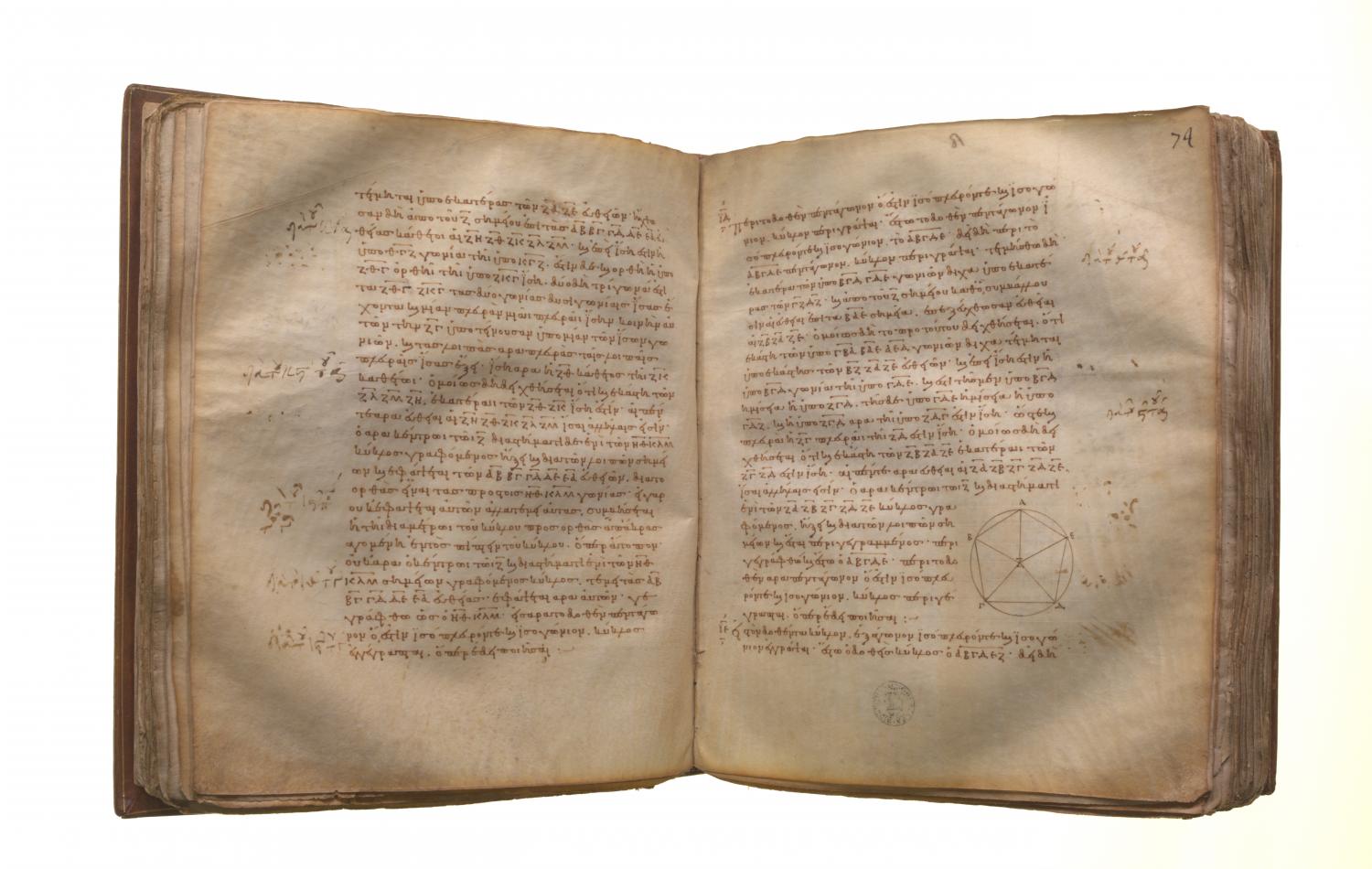Constructions for inscribed and circumscribed figures: Book 4 Proposition 13
Translations
In a given pentagon, which is equilateral and equiangular, to inscribe a circle. Let ABCDE be the given equilateral and equiangular pentagon; thus it is required to inscribe a circle in the pentagon ABCDE. For let the angles BCD, CDE be bisected by the straight lines CF, DF respectively; and from the point F, at which the straight lines CF, DF meet one another, let the straight lines FB, FA, FE be joined. Then, since BC is equal to CD, and CF common, the two sides BC, CF are equal to the two sides DC, CF; and the angle BCF is equal to the angle DCF; therefore the base BF is equal to the base DF, and the triangle BCF is equal to the triangle DCF, and the remaining angles will be equal to the remaining angles, namely those which the equal sides subtend. [I. 4] Therefore the angle CBF is equal to the angle CDF. And, since the angle CDE is double of the angle CDF, and the angle CDE is equal to the angle ABC, while the angle CDF is equal to the angle CBF; therefore the angle CBA is also double of the angle CBF; therefore the angle ABF is equal to the angle FBC; therefore the angle ABC has been bisected by the straight line BF. Similarly it can be proved that the angles BAE, AED have also been bisected by the straight lines FA, FE respectively. Now let FG, FH, FK, FL, FM be drawn from the point F perpendicular to the straight lines AB, BC, CD, DE, EA. Then, since the angle HCF is equal to the angle KCF, and the right angle FHC is also equal to the angle FKC, FHC, FKC are two triangles having two angles equal to two angles and one side equal to one side, namely FC which is common to them and subtends one of the equal angles; therefore they will also have the remaining sides equal to the remaining sides; [I. 26] therefore the perpendicular FH is equal to the perpendicular FK. Similarly it can be proved that each of the straight lines FL, FM, FG is also equal to each of the straight lines FH, FK; therefore the five straight lines FG, FH, FK, FL, FM are equal to one another. Therefore the circle described with centre F and distance one of the straight lines FG, FH, FK, FL, FM will pass also through the remaining points; and it will touch the straight lines AB, BC, CD, DE, EA, because the angles at the points G, H, K, L, M are right. For, if it does not touch them. but cuts them, it will result that the straight line drawn at right angles to the diameter of the circle from its extremity falls within the circle: which was proved absurd. [III. 16] Therefore the circle described with centre F and distance one of the straight lines FG, FH, FK, FL, FM will not cut the straight lines AB, BC, CD, DE, EA; therefore it will touch them. Let it be described, as GHKLM.

